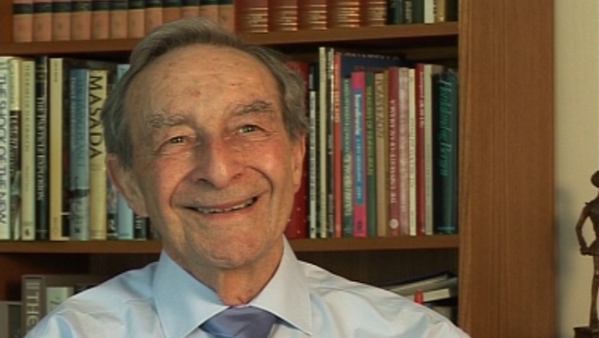NEXT STORY

Taking the liner to England
RELATED STORIES

NEXT STORY

Taking the liner to England
RELATED STORIES


|
Views | Duration | |
|---|---|---|---|
| 31. Hitchhiking: the beauty of Sydney | 50 | 02:13 | |
| 32. Lamington Park and the Antarctic forest | 52 | 02:31 | |
| 33. Taking the liner to England | 52 | 03:06 | |
| 34. Passing through the Suez Canal | 54 | 01:51 | |
| 35. Visiting the Buddhist temple in Kelaniya Vihara | 51 | 02:49 | |
| 36. Passing through Aden | 48 | 00:50 | |
| 37. Reaching England | 64 | 03:00 | |
| 38. Harry Emeléus | 68 | 01:06 | |
| 39. Arriving in Cambridge | 183 | 02:28 | |
| 40. Meeting my paternal relations | 68 | 02:20 |


And so I went up to Brisbane. My friend, Jim Banfield, who was supposed to be coming with me, didn’t make it but joined me later. And I then went to the Lamington Forest which, again, is not well-known here, but that is an extraordinary forest. The border at that place, between New South Wales and Queensland is a cliff, and on the top of this cliff is the forest, and it is impenetrable rainforest, and in amongst that is the Antarctic beech forest. As you may know, Antarctica was once in the tropics, if we can put it that way, there are huge beech forests which are now coal seams in Antarctic, but the living trees, beech trees, are in the Lamington Park, in the Lamington forest.
And that is the place to go if you want to walk, it just abounds in little waterfalls, pools, little lakelets, you know, just an acre or so, surrounded by woods, parakeets, galahs, all sorts of coloured birds flying around. Abounding in snakes, I have to say, I killed 13 tiger snakes, just in one afternoon’s walk, by just dropping stones on them; by and large, they just get away from you. But that was real hiking, and we went from one place to another, from O’Reilly’s, which was an iconic name in Australia also, because he had found, through sheer bush craft, a plane which had come down and crashed, and some of the people had perished. It was a small plane, but the pilot and two others were found, and he found them by going through the bush and following signs, he’d seen a bit of smoke go up. So, I stayed at O’Reilly’s, well, they called it a guesthouse, but it was really their farmhouse. Then coming back, I saw other things, and hitchhiked again, stayed with various people, picked up with my friend. It was a good way to learn about Australia in those days.
Norman Greenwood (1925-2012) was born in Australia and graduated from Melbourne University before going to Cambridge. His wide-ranging research in inorganic and structural chemistry made major advances in the chemistry of boron hydrides and other main-group element compounds. He also pioneered the application of Mössbauer spectroscopy to problems in chemistry. He was a prolific writer and inspirational lecturer on chemical and educational themes, and held numerous visiting professorships throughout the world.
Title: Lamington Park and the Antarctic forest
Listeners: Brian Johnson
Professor Brian FG Johnson FRS, FRSE, FRS Chem, FAcad Eu, FAS. Professor of Inorganic Chemistry University of Edinburgh 1991-1995, Professor of Inorganic Chemistry University of Cambridge 1995-2005, Master Fitzwilliam College Cambridge 1999-2005. Research interests include studies of transition metal carbonyls, organometallic chemistry, nano- particles and homogeneous catalysis. Professor Johnson is the author of over 1000 research articles and papers.
Tags: Brisbane, Lamington National Park, New South Wales, Queensland, Antarctica, O'Reilly's, Australia, Jim Banfield
Duration: 2 minutes, 31 seconds
Date story recorded: May 2011
Date story went live: 25 November 2011